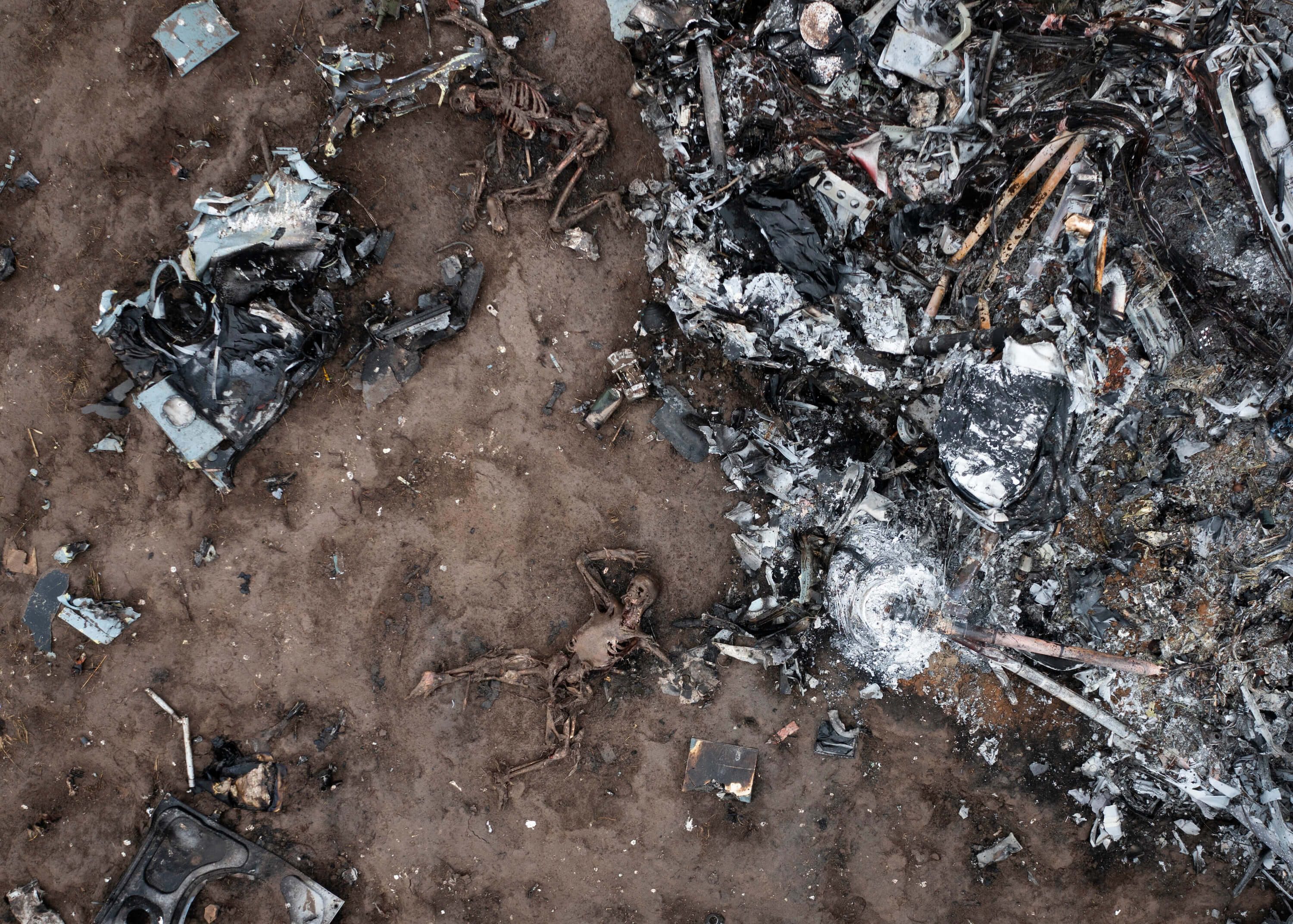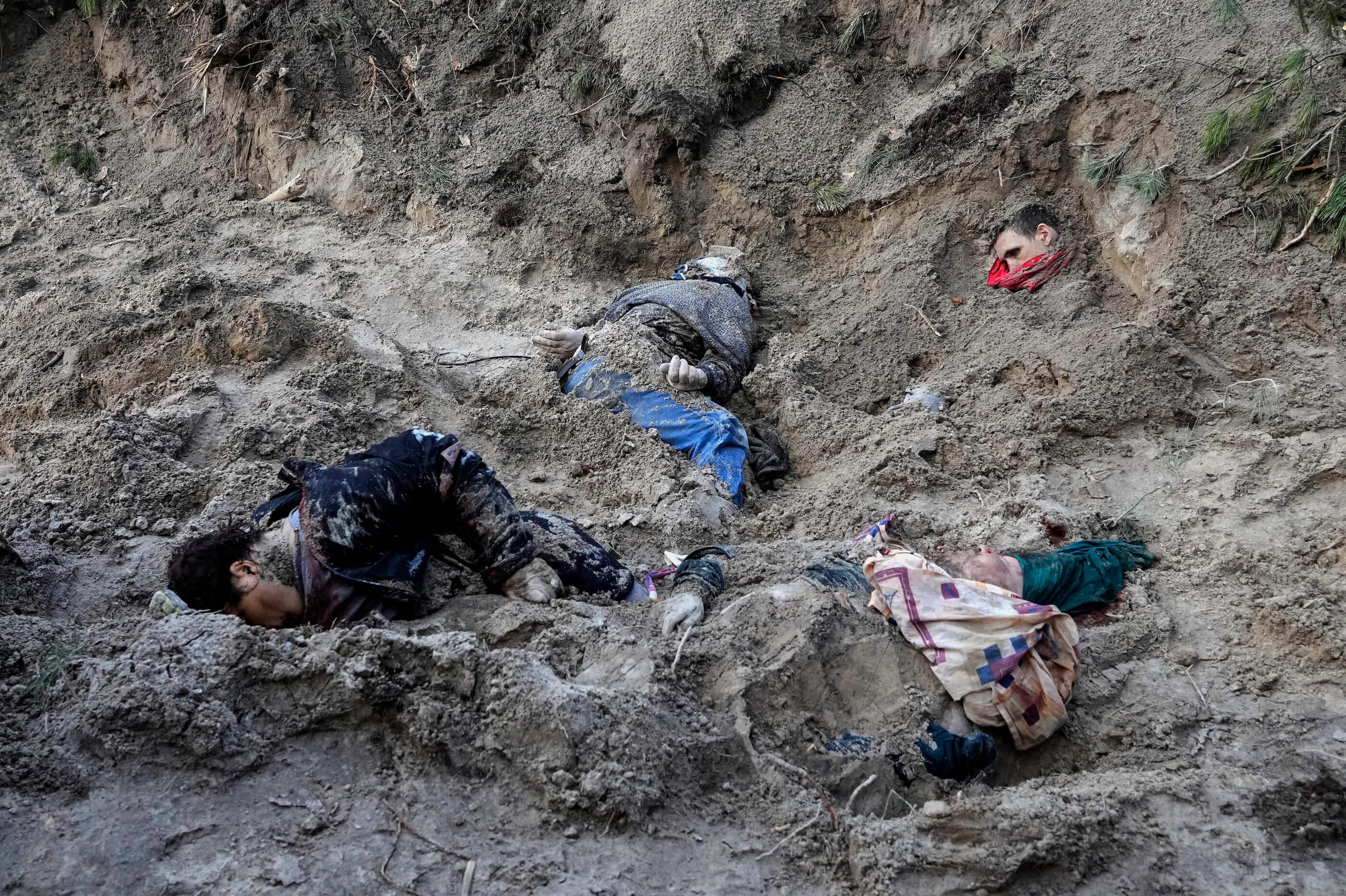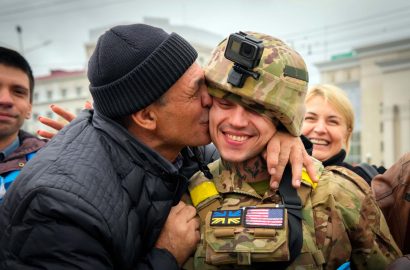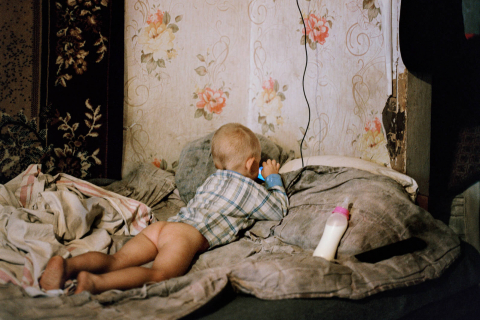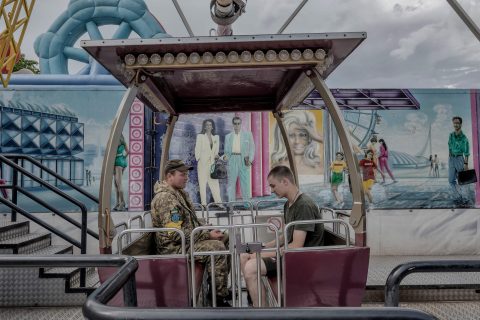

Ten Iconic Photos from the War by Efrem Lukatsky
Efrem Lukatsky is a photojournalist for the international agency The Associated Press, who has witnessed many wars. He has captured scenes from Chechnya, Afghanistan, Iraq, and the Gaza Strip. However, the history of his homeland is equally tumultuous. Lukatsky has documented numerous significant events: from the raising of the Ukrainian flag in the Parliament in 1991 to the first downed Russian helicopter in Hostomel on February 24. His photographs have been featured in prominent international media outlets such as The New York Times, The Guardian, and The Independent. Last year, Time magazine included Lukatsky’s work in its list of the top 100 photos of 2022. At the request of Bird in Flight, the photographer shared the stories behind 10 of his iconic images.
Trostianets
March 28, 2022
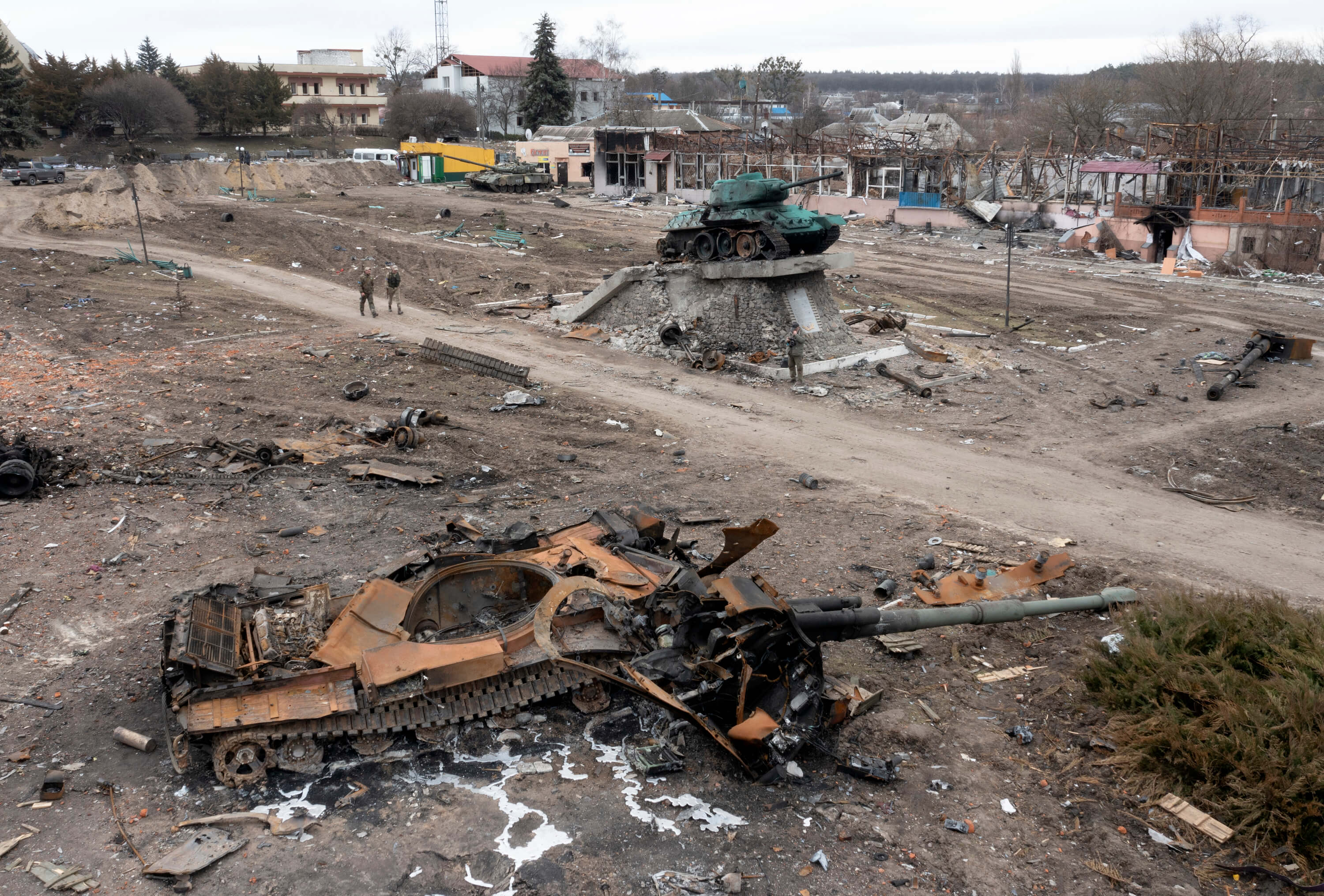
On March 26, of the previous year, Ukrainian soldiers liberated Trostianets in the Sumy region. Just a few days later, I was on the main square of the city. At that time, there was a significant presence of Russian military equipment, and symbolically, a monument to the liberators of the Second World War stood there. However, there were very few people – no one was yet venturing out onto the streets. Fresh memories remained of how Russian soldiers searched houses for “gold and diamonds.” Sometimes, those from whom they found nothing were killed.
In Trostianets, I worked with the internationally renowned photographer James Nachtwey. Together, we went to the hospital where the bodies of Russian soldiers were lying. They were from the “LNR” and “DNR” – easily distinguishable by their outdated army uniforms and belts with star-shaped buckles. Soldiers from the unrecognized republics were usually older.
I then noticed a difference in how Nachtwey and I looked at the dead: he photographed their faces in close-up, standing directly above the bodies. I, on the other hand, had little interest in the Russians. My focus was on the Ukrainian soldiers standing nearby, surveying the bodies of their enemies.
Downed Russian helicopter
April 9, 2022
ok this photograph near Makariv on the way to Bucha. While driving along the road, I noticed many crows in the field and stopped. There, I saw the burnt wreckage of a Russian helicopter that was shot down by the Ukrainian Armed Forces on March 4. The tail of the helicopter still bore a number that indicated it came from the Far East.
The skeletons lay in the field for quite a while — I still remember the ring on the finger of one of them. However, there was no sorrow. I felt horror when I saw the bodies of the killed civilians. But there was no emotion from looking at the bodies of the Russians. I was so indifferent that I even wondered if I had fallen ill. But then, I started to reflect on human fate. Perhaps, the ancestors of these Russians once arrived in the Far East from Ukraine.
Family from Motyzhyn
April 4, 2022
The photograph shows the executed Sukhenko family, who were pulled from a mass grave that day. Olga Sukhenko was the head of the Motyzhynska village council. Her body, along with the bodies of her husband and son, were found in the yard of their own house. Sukhenko did not flee the village and did not cooperate with the Russians.
Another man, a local guard, was killed and thrown into a nearby waterless well. There were few people in Motyzhyn at that time. After this, I went to Bucha.
From the first day of the full-scale war, I was in a state of shock, so I wasn’t acting very professionally – I ignored safety rules. My foreign colleagues who arrived in Kyiv the day before left the capital. I, on the other hand, tried to be everywhere. Usually, before working in hotspots, I take first aid courses, prepare myself, but on February 24, I immediately went to Hostomel.
The war at home disrupted the balance. In the first few days, I naively thought that I could talk to the Russians when I met them, explain something to them. But when I saw dead children, tortured civilians, when the photographer Max Levin was killed, I realized that there were no words for them.
St. Michael’s Golden-Domed Monastery
April 24, 2022
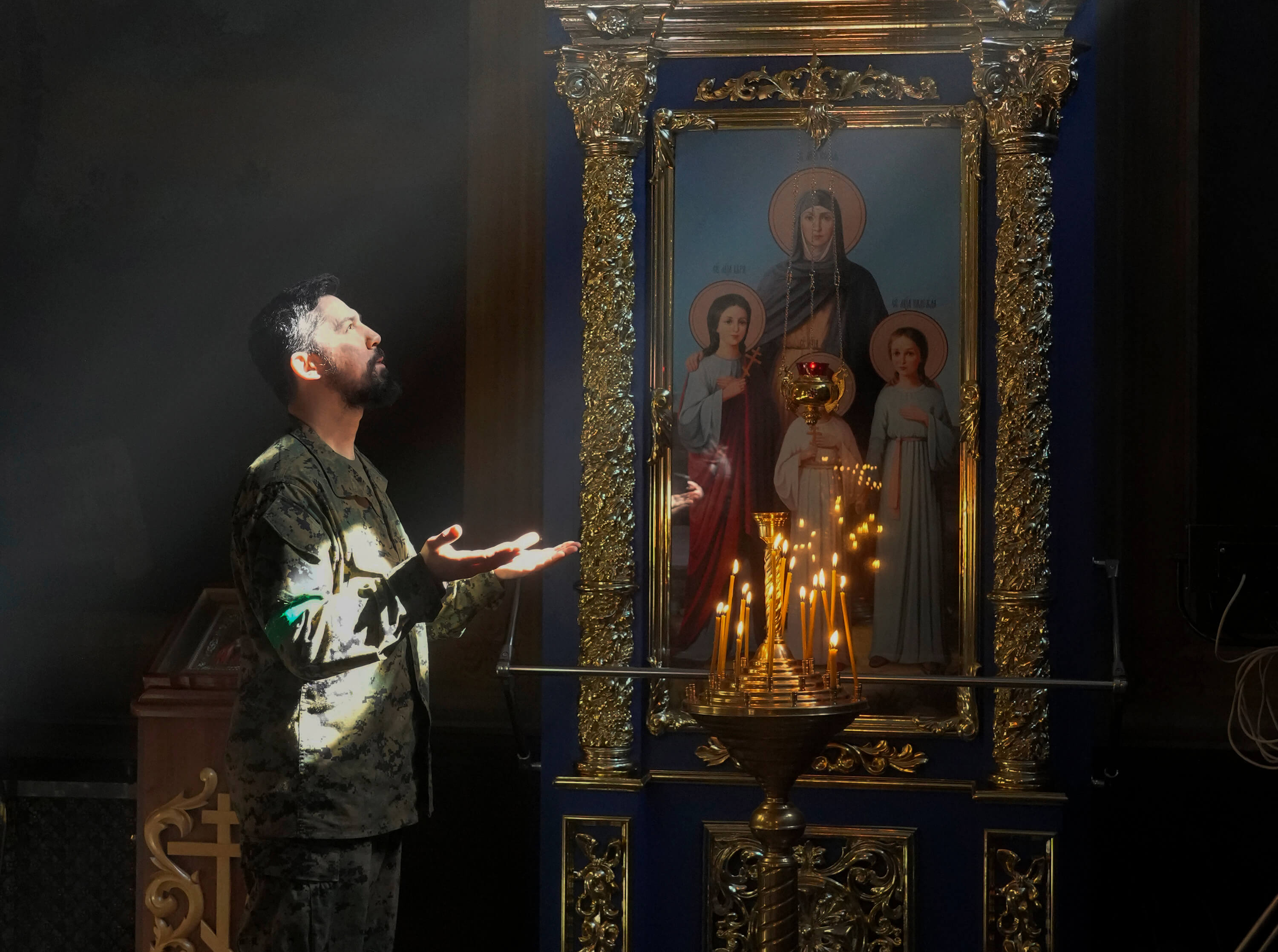
I have many friends in Georgia who also experienced the war with Russia. So, the first toast there is always for peace. Before the war, I didn’t quite grasp the importance of such a wish.
In this photo, a soldier is praying for peace on a Sunday. He was in the church with his wife. He mentioned that he volunteered for the defense and returned to Kyiv for a very short period.
Unfortunately, now the Saint Michael’s Golden-Domed Monastery is associated with funerals for me.
Harvesting Grain in Dnipropetrovsk Region
July 4, 2022
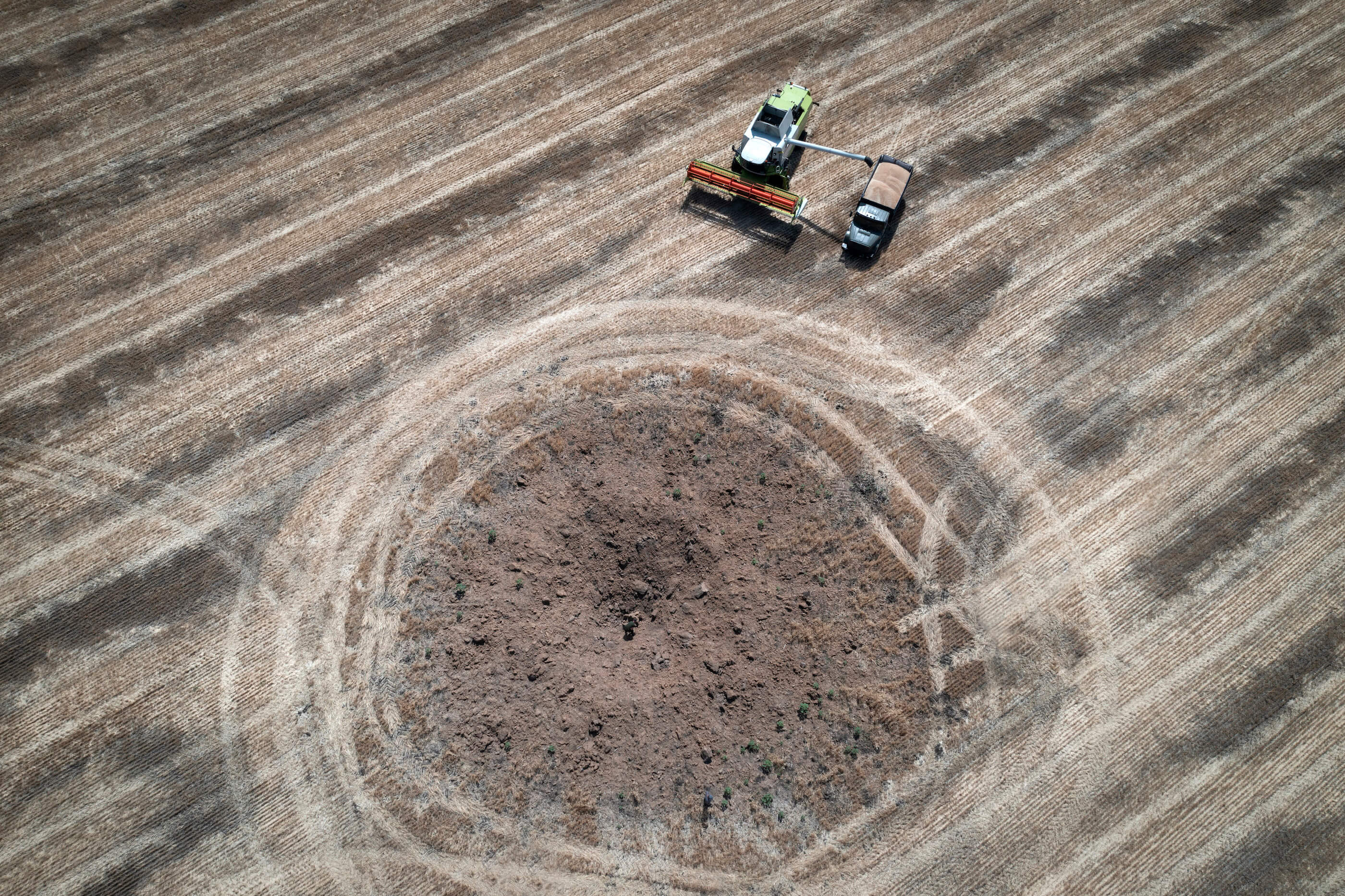
Last summer, the world remembered that Ukraine is the breadbasket of Europe, Africa, and Asia. That’s why I headed south to cover a story about Ukrainian farmers.
Here, the harvest is underway, while heavy fighting is raging just 12 kilometers away. On this field, like many others, there are remnants of rockets and projectiles. The farmers I got to know even have their own small storage of such fragments. These people are constantly at risk: for instance, once a projectile hit their storage and all the equipment burned down. They are afraid, just like everyone else. However, in the farmers’ workspace, there’s a large poster hanging with the words “Freedom or Death” and a flag bearing the portrait of Makhno.
The funeral in Vinnytsia
July 17, 2022
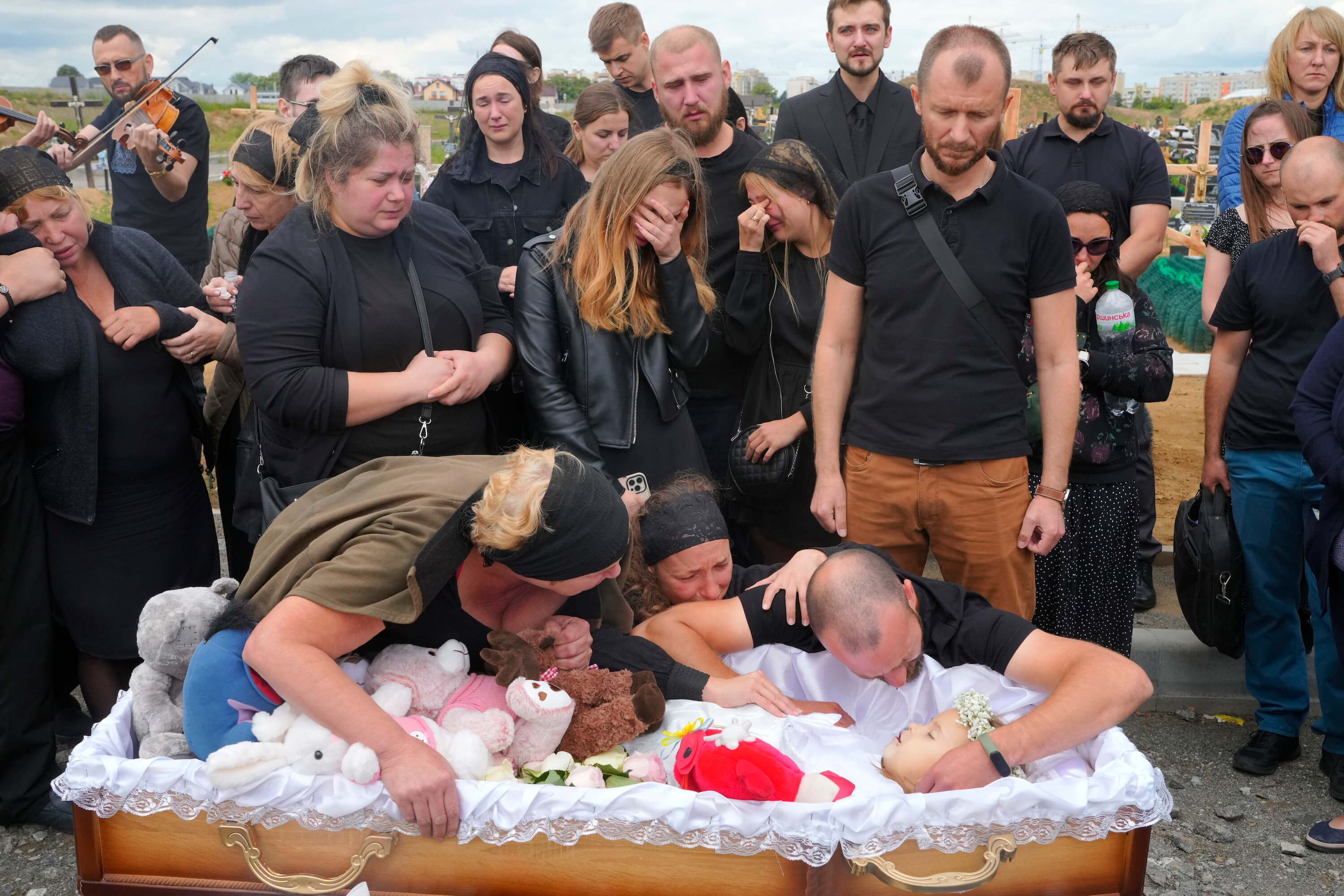
On July 14, 2022, the Russians launched rockets at Vinnytsia. At that time, 26 people were killed, including four-year-old Lisa. The funeral took place three days later, attended by the child’s father. Her mother was injured and at that moment was unaware that she had lost her daughter. There was hardly any press coverage, only one Italian photographer was present. I cried when I took this photograph.
Kherson
November 13, 2022

Getting into the occupied city of Kherson was very difficult, almost impossible. The press was not allowed. Russian billboards with the inscription “With Russia Forever” were still hanging on the streets. At my own risk, I was taken to the city center, to Freedom Square, for an hour. People were still very cautious, but they came there with flowers and flags. In the photo, there’s a soldier who, as it turned out, was also from Kherson. Despite the joy, I had one question in my mind: when will the Russians start seeking revenge and shooting at the city? They didn’t wait long.
The Funeral of Volodymyr Yezhov
December 27, 2022
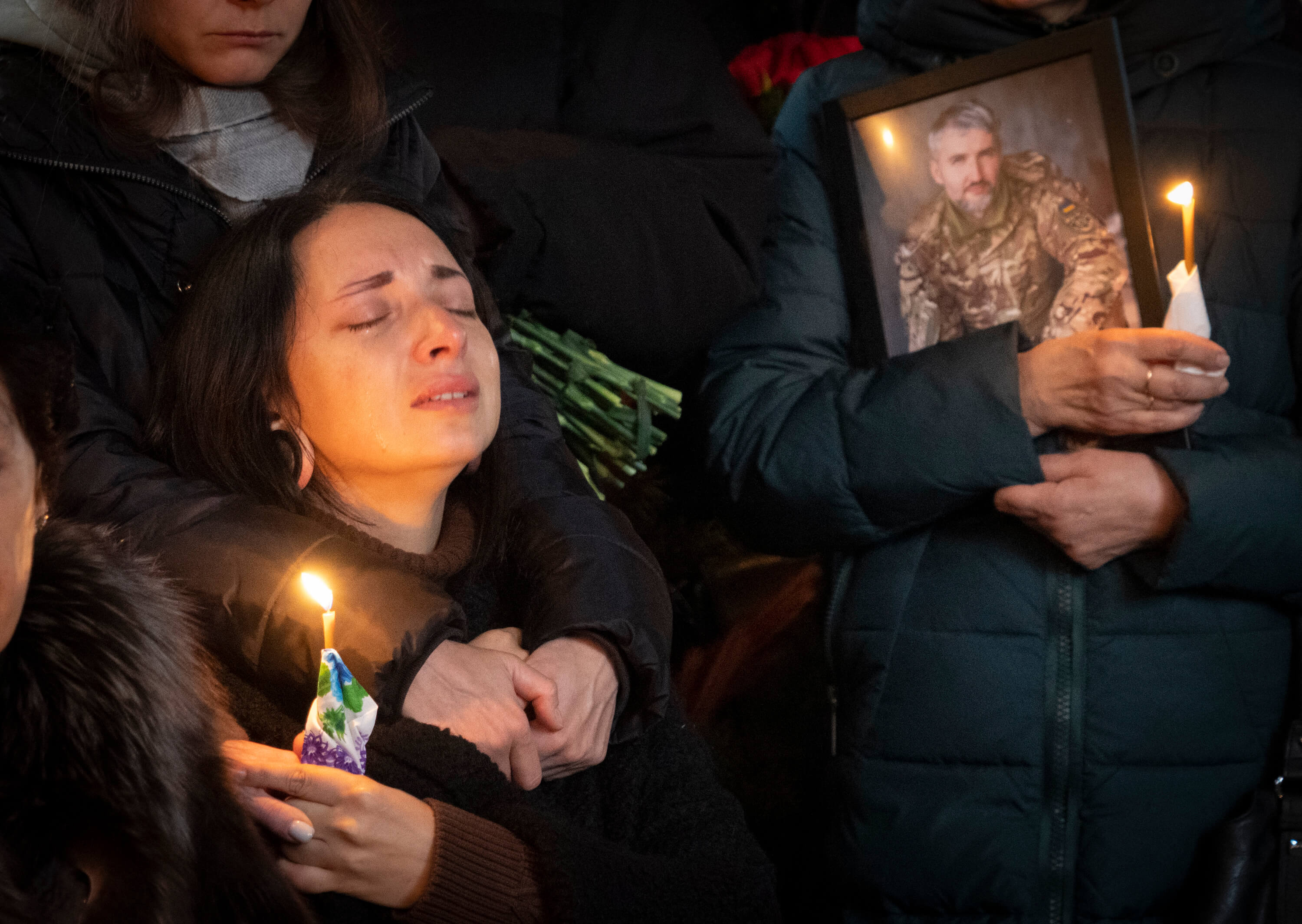
The photo shows the funeral of Volodymyr Yezhov, one of the most renowned Ukrainian game designers, who worked on the characters of the game S.T.A.L.K.E.R. Clear Sky and contributed to creating “Cossacks.” Volodymyr lost his life in December during battles near Bakhmut. From the very first day of the full-scale war, he was a volunteer, and later, a soldier.
Velyka Dymerka
May 17, 2023
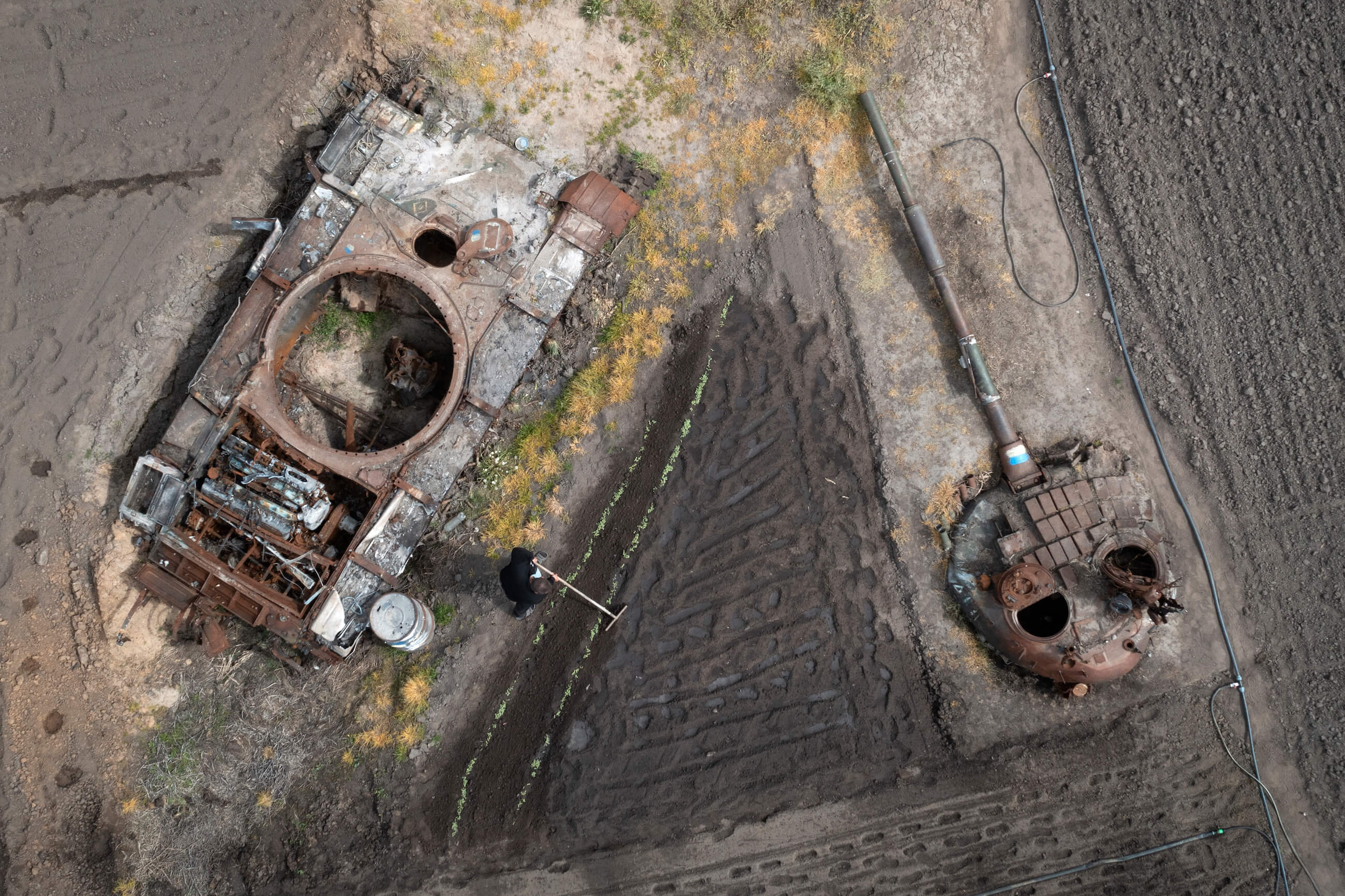
In this photo, a destroyed Russian tank is seen on private property. Its appearance struck me as an example of the unbreakable spirit of the Ukrainian people. In the frame, the owner, a man in his fifties, is seen planting sunflowers on a patch of land near the rusted machinery. The house was burned during the battles for Velyka Dymerka. Fortunately, the owner’s family was not in the village at that moment. The authorities offered to remove the tank, but the man flatly refused—fearing that transporting the machinery would damage his yard. As a result, the enemy tank remained, but the small triangle between the turret and the chassis will now yield a harvest.
I often follow the fate of these heroes and plan to meet with this man in Velyka Dymerka soon.
Bakhmut
May 29, 2023
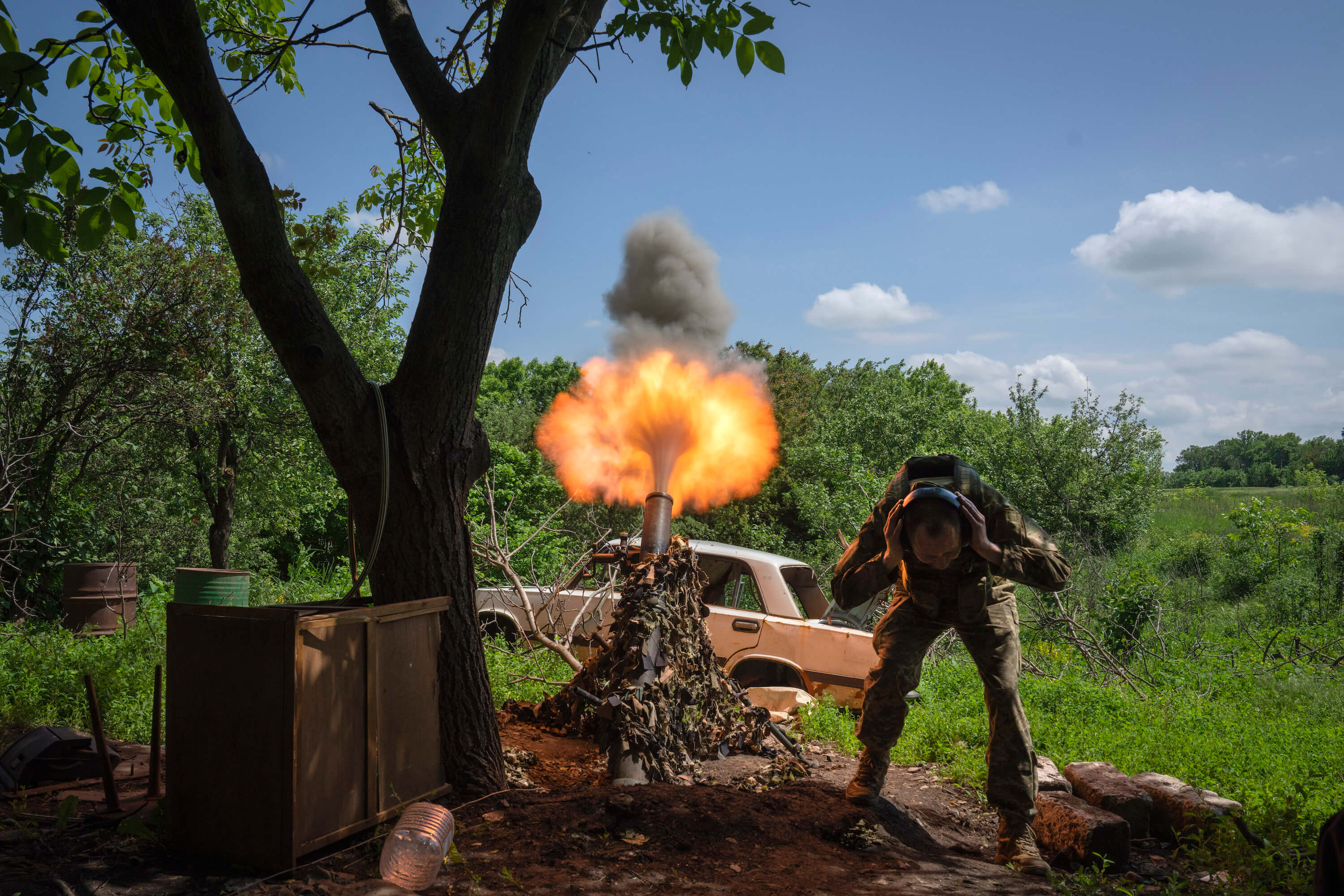
I’ve been to Bahmut many times, but these are battles on the outskirts. The situation is constantly changing, so I can’t answer how it is there right now. I think this city will go down in history as one for which battles were fought the longest. In the photo, there’s a mortarman from the Kharkiv Territorial Defense.
This publication was created with the financial support of the European Union. The content of the publication is the sole responsibility of DW Akademie / MediaFit Program for Southern and Eastern Ukraine and does not necessarily reflect the views of the European Union.
Others project materials

New and best

